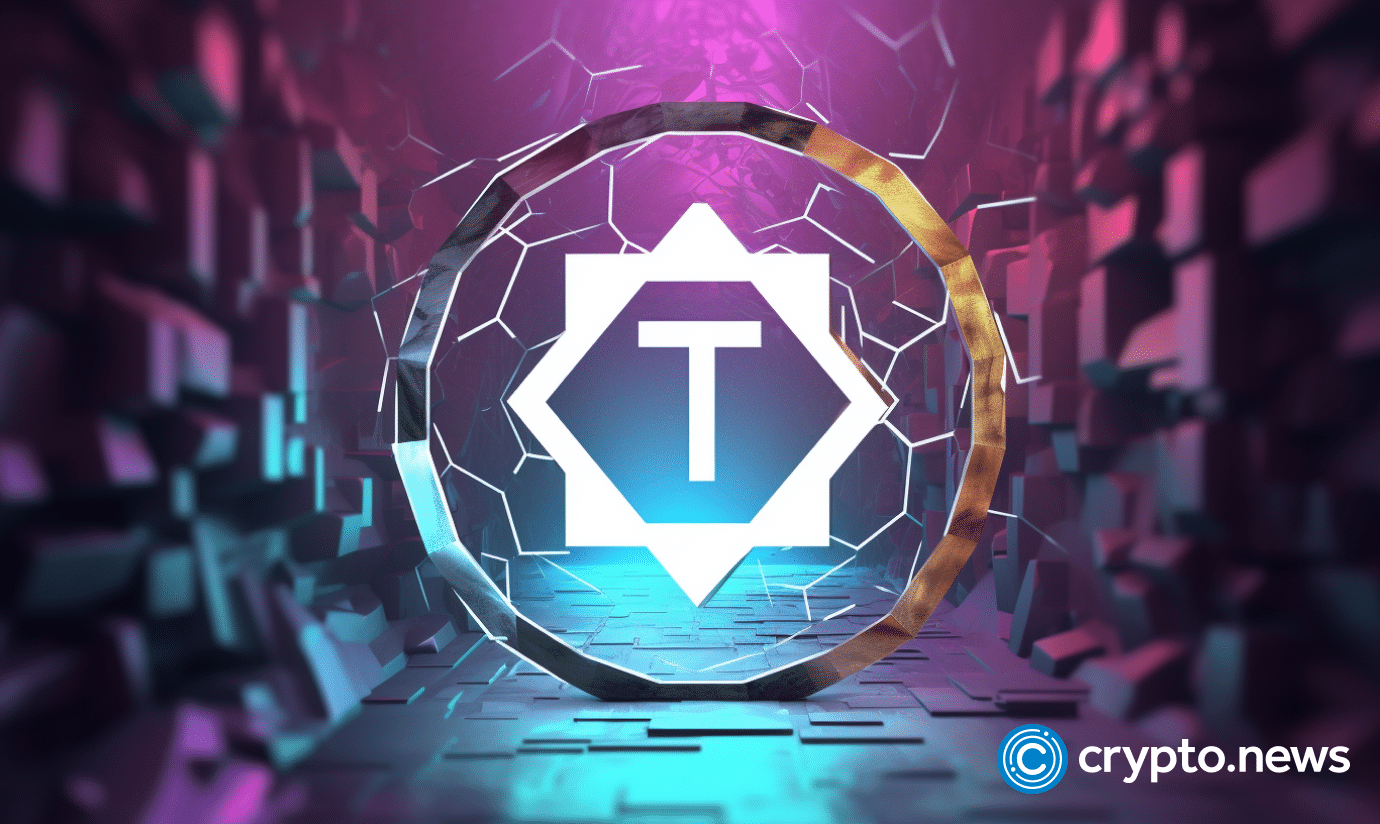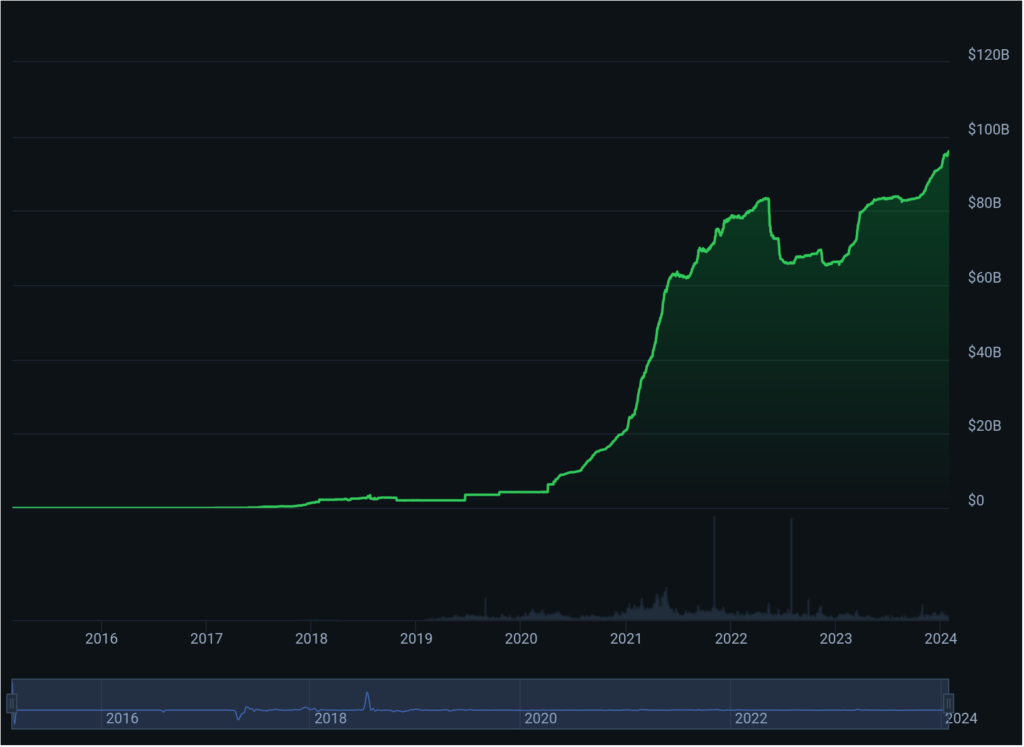Bitcoin ETF sees net inflow of $38.4m, BlackRock outpaces Grayscale
 Bitcoin ETFs experienced a net inflow of $38.4 million on Feb. 1, marking the fifth consecutive day of such inflows.
Bitcoin ETFs experienced a net inflow of $38.4 million on Feb. 1, marking the fifth consecutive day of such inflows.
Grayscale’s Bitcoin Trust ETF (GBTC) also saw a significant net outflow of $182 million. In contrast, the collective net inflow for the remaining nine ETFs in the sector, excluding Grayscale, amounted to $220 million. BlackRock’s iShares Bitcoin Trust (IBIT) outperformed Grayscale Investments’ GBTC in trading volume. This event marks a first for BlackRock since the introduction of spot Bitcoin ETFs in the U.S. on Jan. 11.
During the first three weeks following the launch of these trading products, Grayscale’s GBTC had been the frontrunner in trading volumes. GBTC accounted for nearly half of the trading activity of the ten available ETFs, with approximately $14.4 billion of the total $29.3 billion traded.
You might also like:
US DoJ brings charges in BTC-e exchange case
Lot of talk about the inflows to the US spot #Bitcoin ETFs. Including from me but taking a step back and looking at other TradFi overlaps with Bitcoin we see the opposite story. Which i wrote about yesterday. ~$537 million in outflows from international crypto funds. pic.twitter.com/iNxBtohymA
— James Seyffart (@JSeyff) February 2, 2024
On Feb. 1st, however, IBIT by BlackRock witnessed trading volumes of $302 million, surpassing the $292 million recorded by GBTC. This shift comes amid Grayscale’s challenges with net outflows, reducing its Bitcoin holdings by 5,086 BTC, equivalent to about $218 million.
Despite Grayscale’s net outflows, the sector has seen robust investment activity. BlackRock’s IBIT and Fidelity’s Wise Origin Bitcoin Fund (FBTC) have attracted significant net inflows, amounting to approximately $2.8 billion and $2.5 billion, respectively, since their introductions to the market.
Valkyrie diversifies spot Bitcoin ETF custody with BitGo
 Valkyrie is the first spot Bitcoin ETF issuer to leverage two separate crypto custodians for its fund, thanks to its deal with BitGo.
Valkyrie is the first spot Bitcoin ETF issuer to leverage two separate crypto custodians for its fund, thanks to its deal with BitGo.
BitGo will provide custodial services for Valkyrie’s Bitcoin Fund (BRRR), safekeeping and storing a portion of the underlying Bitcoin (BTC) in the firm’s exchange-traded product. Valkyrie and BitGo reached the agreement on Jan. 17 but only filed with the U.S. Securities and Exchange Commission (SEC) on Feb. 1.
The strategy diversifies Valkyrie’s spot BTC ETF by splitting the risk across multiple crypto custodians, reducing single failure points, and bolstering the fund’s safety. Other issuers may eventually chart similar courses amid competition among asset managers.
You might also like:
Bitcoin ETFs surge with $247m inflow as BTC nears $44k again
Issuers raced to capture market participants and investors before and after the SEC approved spot Bitcoin ETFs on Jan. 10. Fees were a major talking point with these funds. Some issuers even offered fee waivers for up to six months.
Still some after hours trading left but looks like BlackRock's $IBIT is the first ETF to trade more than Grayscale's $GBTC in a single day.
Total trading today was kind of a dud though at $924 million — first day below $1 billion in dollar volume for the group since launch. https://t.co/IeIF2COm4F pic.twitter.com/ZtADLBQP63
— James Seyffart (@JSeyff) February 1, 2024
Initially, Valkyrie boasted one of the highest fees at 0.8%, but the issuer rolled back its charge to 0.25% with BlackRock and Fidelity. However, the Valkyrie Bitcoin ETF has recorded far lower trading volume than the Wall Street heavyweights.
BlackRock became the first fund to out-trade Grayscale’s GBTC following billions of outflows from the mammoth fund over two weeks.
Tether minted another $1b USDT on Tron, here’s why

Stablecoin operator Tether again minted a trove of USDT tokens on Tron’s network, but there’s a catch: the coins aren’t yet available for swaps or transactions.
According to LookOnChain, Tether has minted $13 billion in new USDT tokens on Ethereum and Tron blockchains since October last year. The latest addition to Justin Sun’s Tron decentralized network is $1 billion in USDT.
While the tokens have been minted, on-chain data showed that the USDT added to Tron on Jan. 29 has not been issued yet. This means that the massive mint was intended for future purposes, as confirmed by Tether CEO Paolo Ardoino.
PSA: 1B USDt inventory replenish on Tron Network. Note this is an authorized but not issued transaction, meaning that this amount will be used as inventory for next period issuance requests and chain swaps.
— Paolo Ardoino 🍐 (@paoloardoino) January 29, 2024
You might also like: Aggregate stablecoin supply sees largest increase since October
Ardoino’s clarification, however, has not dispelled speculation that Tether’s mint may foreshadow price increases across a swathe of cryptocurrencies. An uptick in the creation of new USDT is usually tied with bullish sentiment and is sometimes employed as an indicator to signal rising demand.
Tether’s total market capitalization, a staggering $96 billion at press time, has been in an uptrend since January last year following multiple marquee crypto bankruptcies and collapses like Terraform, Three Arrows Capital, and FTX. USDT market cap | Source: CoinGecko
USDT market cap | Source: CoinGecko
In those 12 months, USDT’s cap map grew by nearly $30 billion and solidified its position as the dominant stablecoin on the market, but former Bitmex CEO Arthur Hayes believes legacy financial institutions could challenge this trend.
During an interview, Hayes said banks like JPMorgan are positioned to overtake Tether and rivals like Circle if and when regulators permit fiat-backed stablecoin issuance.
Hayes did not surmise when this shift might occur but the 2024 U.S. presidential election may be pivotal in shaping America’s whole-of-government approach to blockchain adoption and crypto assets. Galaxy Digital CEO Mike Novogratz said crypto regulations before an election outcome are unlikely. Some lawmakers foresee friendlier digital asset rules depending on who eventually wins.
Recently, GOP candidate Donald J. Trump bashed CBDCs and independent runner Robert F. Kennedy labeled them a threat to civil liberties.
Read more: How crypto becomes a big player in the 2024 presidential elections
Speed vs decentralization: could L2 solutions undermine cryptocurrency core ethos?

The layer-2 (L2) scaling solutions ecosystem is booming. Can crypto achieve scalability without sacrificing decentralization?
The congestion and high transaction fees in established blockchains like Ethereum (ETH) and Bitcoin (BTC) have sparked a need for additional solutions to handle the increased demand. The L2 sidechains such as Arbitrum (ARB), Optimism (OP), and Polygon (MATIC) emerged as an attempt to enhance transaction capabilities while ensuring smooth and orderly operations.
In short, layer-2 solutions are additional protocols or frameworks constructed on existing blockchains to improve scalability and transaction throughput. They come in various forms, such as rollups, state channels, and sidechains.
They alleviate the computational load on the main chain by offloading it to a secondary layer while ideally ensuring security and decentralization.
Optimistic rollups, like Arbitrum and Optimism, take a trust-but-verify stance, treating transactions as valid unless a challenge proves otherwise.
Zero-knowledge rollups, like zkSync, perform calculations away from the main chain and then submit proof that everything checks out.
These solutions accomplish scaling by processing thousands of transactions off-chain and then bundling them into a single transaction on the main chain. This action effectively diverts the transactional load onto their parallel network, easing congestion on the mainnet.
Yet, prominent figures, including Ethereum’s co-creator, Vitalik Buterin, have recently voiced concerns about centralization and censorship in L2 solutions.
Pseudonymous blockchain researcher Andy recently took to X, stating that decentralization had been sidelined for “immediate feedback loops, accessibility, and user acquisition.”
𝗥𝗼𝗹𝗹𝘂𝗽𝘀 𝗮𝘀 𝘄𝗲 𝗸𝗻𝗼𝘄 𝘁𝗵𝗲𝗺 𝘁𝗼𝗱𝗮𝘆 𝗮𝗿𝗲 𝗺𝗼𝗿𝗲 𝗰𝗲𝗻𝘁𝗿𝗮𝗹𝗶𝘇𝗲𝗱 𝘁𝗵𝗮𝗻 𝗮𝗻𝘆𝗼𝗻𝗲 𝗰𝗮𝗻 𝗶𝗺𝗮𝗴𝗶𝗻𝗲…
In the quest to scale Ethereum with rollups, decentralization has been put to the backburner in exchange for immediate feedback loops,… pic.twitter.com/ap4DwMVZLF
— Andy 🦇 🔊 (@ayyyeandy) October 10, 2023
















































![RichBeak News [EN]:How options expiration will affect BTC and ETHA large number of bitcoin (BTC)](https://cdn.bulbapp.io/frontend/images/e128f363-f0c0-413d-a2da-4e9ba9c1e258/1)



